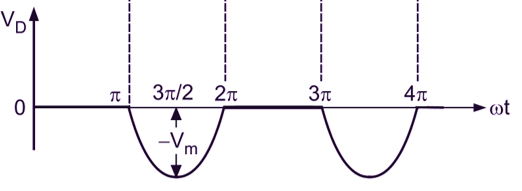In this topic, you study Single Phase Rectifier – Circuit Diagram, Working, Types & Waveforms.
Single phase rectifier work on single phase ac voltage (or step down ac line voltage) to deliver uncontrolled dc voltage i.e. the output dc voltage is always fixed. Single phase rectifiers can be of three types.
- Single phase half-wave rectifier,
- Single phase centre tapped (or mid-point) rectifier,
- Single phase bridge rectifier.
Single Phase Half Wave Rectifier With Resistive load
Though this type of rectifier is not used in industrial applications because of it’s poor performance in terms of rectifier efficiency (low), ripple factor (high), output dc voltage (low), etc., it is useful in understanding the principle of rectifier operation. Fig. 1 shows single phase half-wave diode rectifier with R load and its waveforms. During the positive half cycle, diode is forward biased and it conducts from 0° to π i.e. 180°. The output voltage Vo is equal to the source voltage, and the load current will be io = Vo/R. As soon as Vs becomes negative after π, diode is reverse biased. Output voltage, as well as output current, are zero from π to 2π. After 2π, diode is again forward biased and conduction begins.

(a) Circuit diagram


(b) Waveforms
Fig. 1: Single phase half-wave rectifier with R load
To find out the average voltage present in the rectified output, integration of source voltage over the period from 0 to π is computed. Since our input voltage is Vs = Vm sin ωt (a continuous signal in the form of y = sin x). Therefore,
\[{{\text{V}}_{\text{o}}}={{\text{V}}_{\text{avg}}}=\frac{\int\limits_{0}^{\text{ }\!\!\pi\!\!\text{ }}{{{\text{V}}_{\text{m}}}\cdot \sin \omega \text{t}\cdot \text{d}(\omega \text{t})}}{2\text{ }\!\!\pi\!\!\text{ }}\]
or
\[{{\text{V}}_{\text{avg}}}=\frac{{{\text{V}}_{\text{m}}}}{\text{ }\!\!\pi\!\!\text{ }}\]